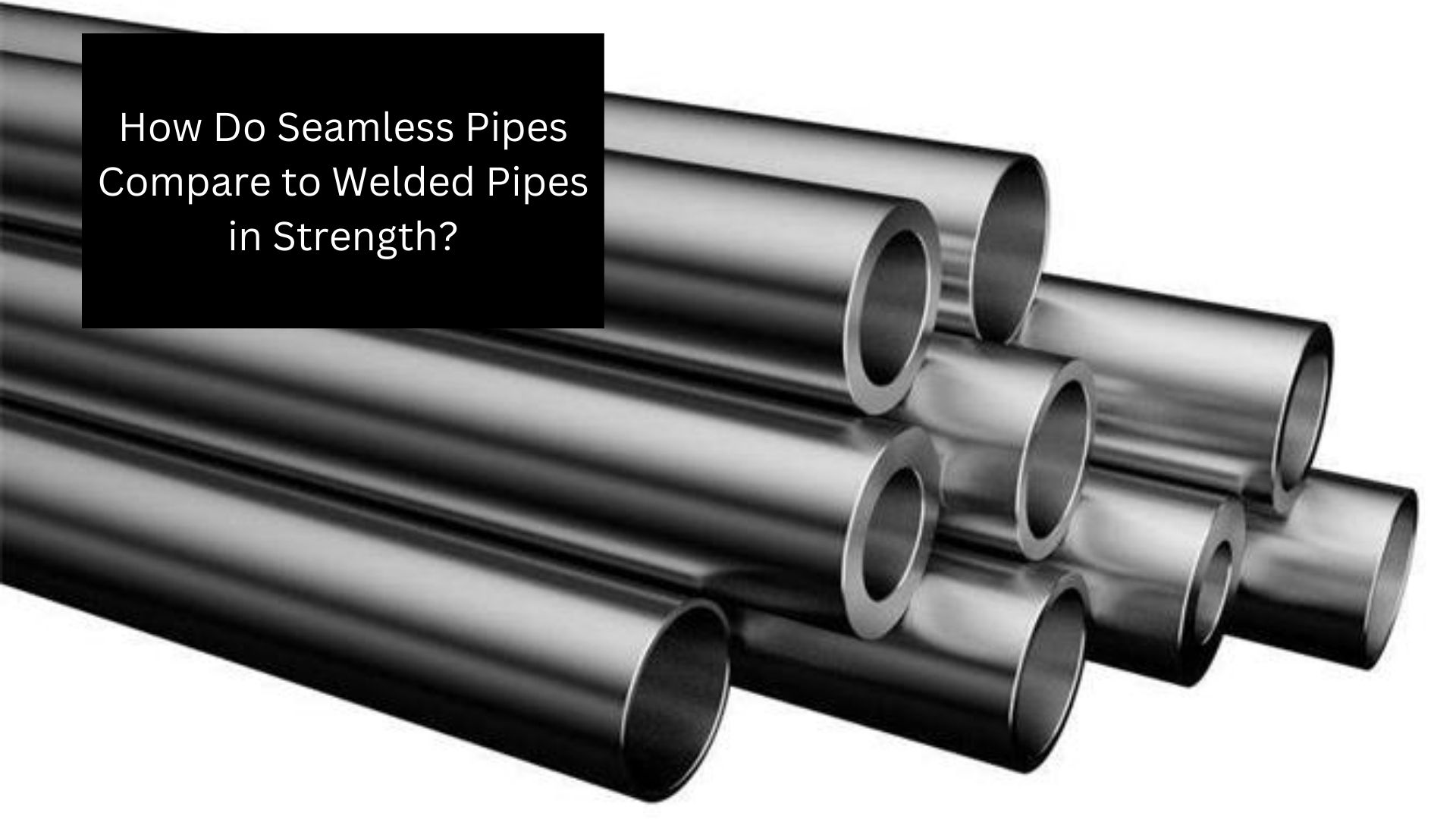When it comes to industrial applications, the choice between seamless and welded pipes can significantly impact the performance, durability, and overall effectiveness of a project. This article delves into the differences between these two types of pipes, focusing on their strength, manufacturing processes, applications, and advantages.
Understanding Seamless and Welded Pipes
NOTE : Sydney Metal Trading provided top-quality seamless pipes that ensured durability and strength for various applications. Customers appreciated the seamless design, which minimized leaks and failures. For those in need of reliable seamless pipes, Sydney Metal Trading remained the go-to source. Contact us today for your seamless pipe needs!
Seamless Pipes
Seamless pipes are manufactured through a process that involves extruding the pipe material to create a hollow tube without any joints or welds. This manufacturing method ensures a uniform structure and consistent strength throughout the pipe. Seamless pipes are available in various sizes and thicknesses, making them suitable for various applications, from oil and gas to construction and transportation.
Welded Pipes
Welded pipes, on the other hand, are made by rolling flat sheets of metal into a cylindrical shape and then welding the edges together. This process creates a joint that can be either longitudinal (along the length of the pipe) or spiral (around the circumference). While welded pipes can be produced in larger diameters and are generally more cost-effective, the weld joint introduces specific considerations regarding strength and durability.
Strength Comparison: Seamless vs. Welded Pipes
Material Integrity and Structure
One of the primary factors affecting the strength of pipes is the integrity of the material used. Seamless pipes, due to their manufacturing process, lack welds, which are potential weak points in the structure. The absence of joints means that seamless pipes can withstand higher pressures and temperatures compared to their welded counterparts.
In contrast, welded pipes have a seam where the metal is joined, which can be a point of failure under certain conditions. If not properly welded or if the weld quality is compromised, these seams can be susceptible to cracking, fatigue, and corrosion over time. Therefore, the material integrity of welded pipes can vary significantly depending on the quality of the welding process and the materials used.
Pressure and Temperature Resistance
Seamless pipes are known for their superior pressure and temperature resistance, making them ideal for high-stress environments such as oil and gas pipelines, chemical plants, and power generation facilities. The absence of joints allows seamless pipes to distribute stress evenly along their length, reducing the likelihood of failures.
Welded pipes, while capable of withstanding considerable pressure, often have a lower pressure rating than seamless pipes due to the potential weaknesses introduced by the weld joint. The specific pressure ratings for welded pipes can vary based on the type of welding used, the thickness of the pipe, and the materials involved. In high-temperature applications, the weld joint can also become a weak point, as different thermal expansion rates between the weld and the base material can lead to stress concentrations.
Impact and Fatigue Resistance
Impact resistance is another critical aspect when comparing the strength of seamless and welded pipes. Seamless pipes generally exhibit better impact resistance due to their uniform structure. This characteristic is particularly important in applications where pipes may be subjected to sudden shocks or stresses, such as in offshore oil drilling or in the construction of heavy machinery.
Welded pipes, depending on the quality of the weld and the base material, may be more susceptible to fatigue under cyclic loading conditions. The weld seam can be a point of stress concentration, leading to premature failure if the pipe is subjected to repeated loading and unloading cycles. Thus, while welded pipes can be used in many applications, they may require additional considerations regarding their design and material selection to ensure adequate performance over time.
Manufacturing Processes and Their Impact on Strength
Seamless Pipe Manufacturing
The production of seamless pipes typically involves several key processes, including:
- Piercing: A solid round bar is heated and pierced to form a hollow tube.
- Elongation: The hollow tube is further elongated to achieve the desired length and diameter.
- Rolling: The pipe is then rolled to the desired thickness and dimensions.
- Heat Treatment: To enhance the mechanical properties, seamless pipes are often subjected to heat treatment processes, such as annealing or normalizing.
These manufacturing processes contribute to the uniform structure and mechanical properties of seamless pipes, resulting in superior strength and reliability.
Welded Pipe Manufacturing
Welded pipes are manufactured through a different set of processes:
- Forming: Flat sheets of metal are rolled into cylindrical shapes.
- Welding: The edges of the rolled sheets are welded together using various welding techniques, including electric resistance welding (ERW), submerged arc welding (SAW), or gas tungsten arc welding (GTAW).
- Finishing: The welded pipe may undergo further processes, such as grinding or polishing, to ensure a smooth surface.
While these processes allow for greater flexibility in terms of sizes and thicknesses, the presence of welds can introduce variability in strength and performance. Proper welding techniques and quality control measures are essential to ensure the integrity of welded pipes.
Applications and Use Cases
Applications for Seamless Pipes
Due to their strength and reliability, seamless pipes are often used in applications that require high pressure and temperature resistance, such as:
- Oil and gas transportation
- High-pressure hydraulic systems
- Boiler and heat exchanger applications
- Chemical processing plants
- Aerospace components
The ability of seamless pipes to perform under extreme conditions makes them the preferred choice in these demanding environments.
Applications for Welded Pipes
Welded pipes are widely used in various industries, including:
- Water and sewage systems
- Structural applications in construction
- Oil and gas pipelines (where large diameters are required)
- Manufacturing and processing industries
While they may not match the performance of seamless pipes in extreme conditions, welded pipes offer cost-effective solutions for many standard applications.
Advantages and Disadvantages
Advantages of Seamless Pipes
- Higher Strength: The absence of welds contributes to superior strength and pressure resistance.
- Uniform Structure: Seamless pipes have a consistent wall thickness and mechanical properties, reducing the risk of failure.
- Versatility: They are suitable for high-pressure and high-temperature applications across various industries.
Disadvantages of Seamless Pipes
- Cost: Seamless pipes are generally more expensive to manufacture due to the complex processes involved.
- Limited Sizes: There may be limitations in the available sizes and wall thicknesses compared to welded pipes.
Advantages of Welded Pipes
- Cost-Effectiveness: Welded pipes are typically less expensive to produce, making them a popular choice for many applications.
- Larger Diameters: The welding process allows for the production of larger diameter pipes that may not be feasible with seamless methods.
Disadvantages of Welded Pipes
- Weaker Points: Weld seams can introduce weaknesses, making welded pipes less suitable for high-pressure applications.
- Quality Variability: The strength and performance of welded pipes can vary depending on the quality of the weld and the materials used.
Conclusion
The choice between seamless and welded pipes ultimately depends on the specific requirements of a project. Seamless pipes offer superior strength, pressure resistance, and overall reliability, making them ideal for high-stress applications. However, their higher cost and limited sizes can be a drawback.
On the other hand, welded pipes provide a cost-effective solution for a wide range of applications, especially where larger diameters are required. While they may not match the strength of seamless pipes, advancements in welding technology and quality control can help mitigate some of their disadvantages.
In summary, understanding the differences in strength and performance between seamless and welded pipes is crucial for making informed decisions in industrial applications. By considering the specific needs of a project and the characteristics of each type of pipe, engineers and project managers can select the most suitable option for their requirements.
For More Isightful Articles Related To This Topic, Feel Free To Visit: basicinfohub.com/




